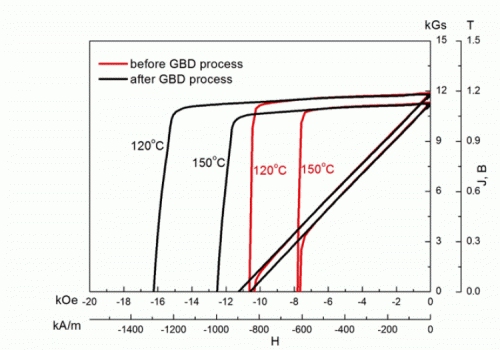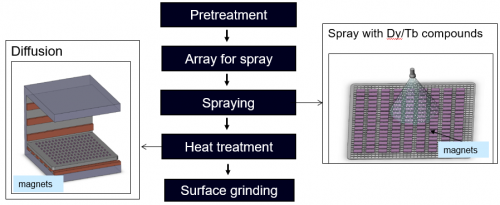GBD magnets are an environmentally friendly solution.
One of the main topics in global permanent magnet research is the reduction of HRE, without degrading the performance of NdFeB permanent magnets, but rather improving them. A promising approach to achieve this goal is the grain boundary diffusion process, also known as the GBD process.
In this newly introduced production process, the intrinsic coercive field strength H cJ of NdFeB magnets can be significantly increased:
Demagnetization curves of a NdFeB magnet before the GBD process (red curve) and after the GBD process (black curve) at 120 ° C and 150 ° C. Here it is important to note that the GBD process has a negligible influence on the residual polarization B r .
The increase of the coercive force H cJ depends on the thickness of the magnet. The thinner the magnet, the better the coercive force H cJ . Here you can find graph 1.
With efficient use of HRE, the reduction of remanence can be practically neglected. Here you can find graph 2.
GBD – PVD
There are many options for carrying out the GBD process.
Yunsheng uses the following two methods:
- Spray method
- Physical Vapor Deposition – PVD method
The spray manufacturing process for GBD sintered NfFeB magnets
In the GBD process, sintered permanent magnets are coated with a thin layer of heavy rare earth metal (HRE) and then undergo a special heat treatment. During the heat treatment, material with an HRE content diffuses along the grain boundaries into the interior of the magnet. This means that the NdFeB grains are surrounded by an HRE-rich shell.
Here you can find the GBD alloys and here the demagnetization curves.


